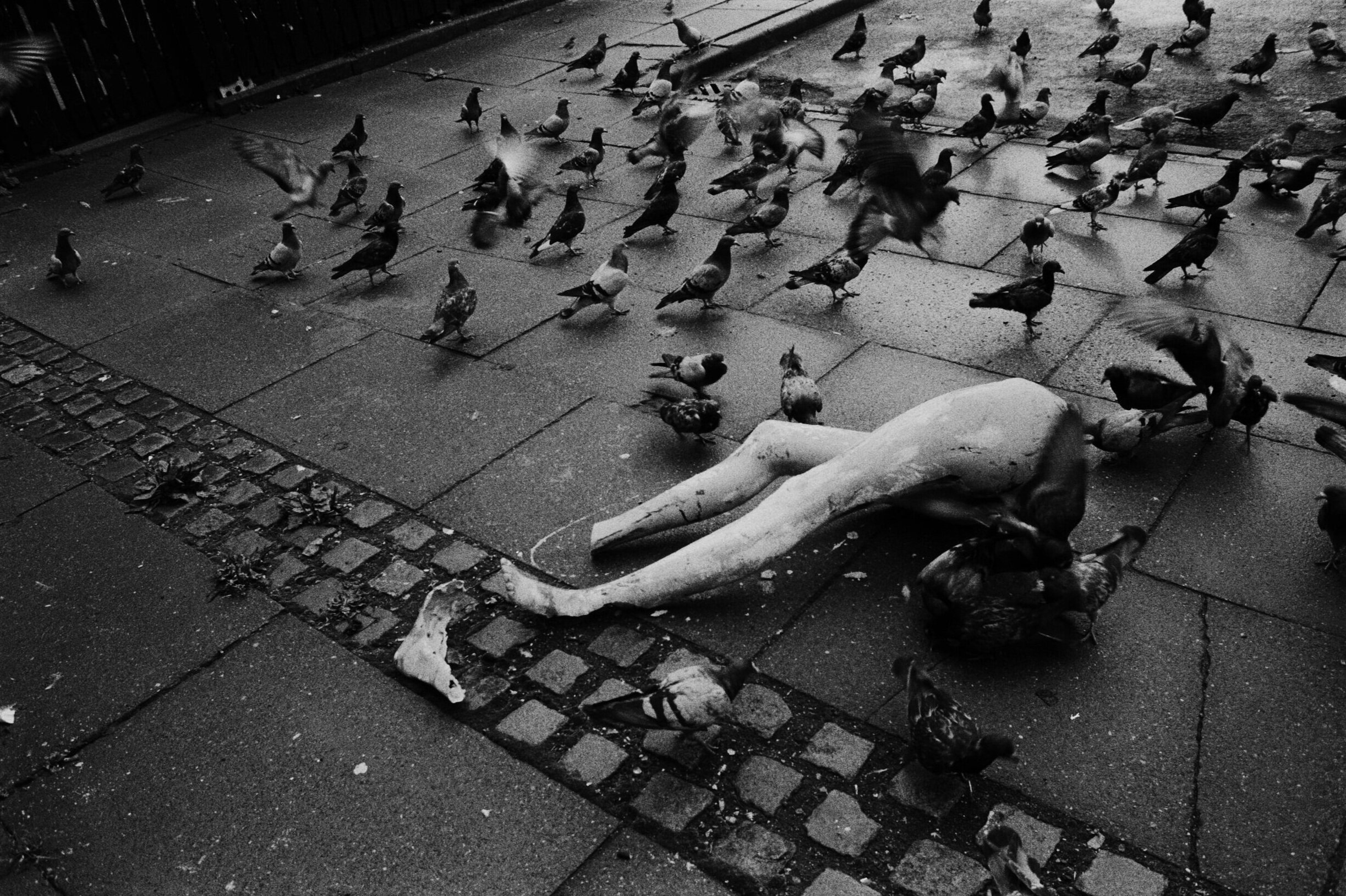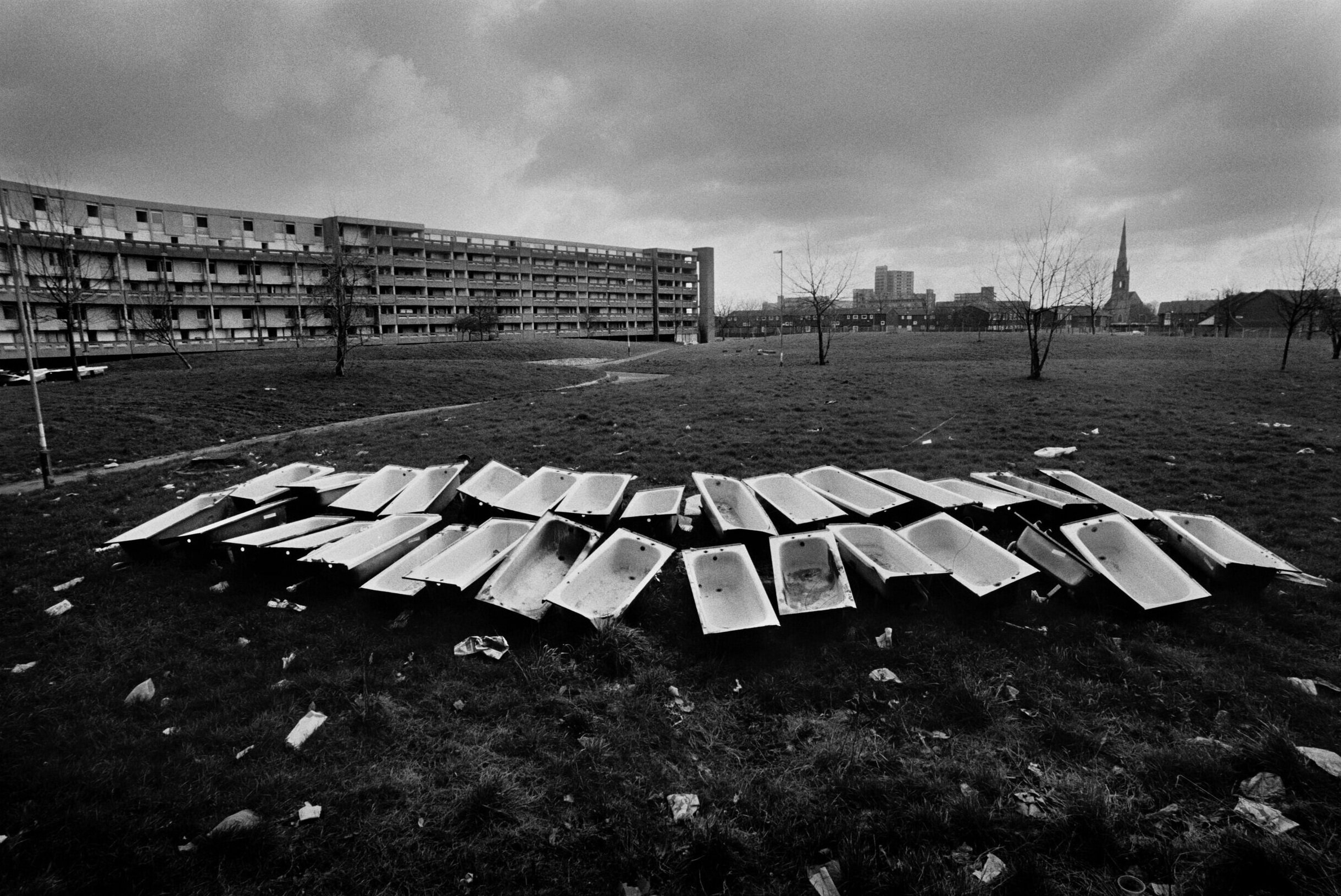Hulme (1991-1994)








Hulme, Manchester 1991-1994
Constructed in the 1960’s, Hulme was the largest housing development in Europe – with a total of 3,284 homes and a capacity for over 13,000 people. By the 1990’s Hulme had been written off and funds were made available to demolish the estate in its entirety. The scale of the failure of this housing project, the enormous waste of public money and the negative impact on the community were overwhelming and I wanted to document the end of that era – and the beginning of the third major regeneration of Hulme.
The post-war slum-clearance of residential districts in Manchester, coincided with the demand for fast-built, high density housing. The regeneration programme transformed Hulme into a sea of low-rise brutalist architecture, comprised mainly of four curved concrete apartment blocks linked by deck-access walkways.
In 1974, just two years after the completion of The Crescents, a five-year-old child died after falling from a balcony on the sixth floor – the fatal accident was attributed to a serious design flaw that enabled even young children to climb onto the balcony ledge. Subsequently, families were moved out of The Crescents and the flats were only offered to students and all-adult households - a radical shift in the demographic, which was previously underpinned by ‘conventional’ families.
It soon became evident that the flats were poorly constructed, difficult to heat, damp, suffered from inadequate sewage systems, were difficult to maintain and repair because of asbestos, infested by cockroaches and rats, rife with crime, dangerous at night, virtually impossible to police and barely accessible for emergency services. By 1975 The Crescents had gained a national notoriety and 96.3% of residents wanted to be re-housed.
By 1984, the Council had stopped collecting rent from the tenants. The crime rates for murder and muggings in Hulme were 30% higher than the national average.
The estate was an unmitigated failure, but there were no funds available for demolition or regeneration. During this time, the community in The Crescents was eclectic and bohemian – inhabited by a subculture, of artists, musicians and squatters. Art house cinemas and nightclubs emerged. There was a sense of possibility for creativity to flourish outside of the normal (financial) constraints. But eventually, even the alternative party scene vanished from The Crescents and by the 1990’s only a handful of residents were brave enough to remain.
In 1991, Manchester City Council received £31million from Central Government, to regenerate the estate for the third time in 200 years. The Crescents had become synonymous with how not to design and create housing schemes across Europe. The Crescents and the entire Hulme estate were demolished between 1991-93.
Hulme has subsequently undergone a £400 million redevelopment programme with input from residents, most of whom advocated a return to traditional forms of terraced and semi-detached housing.
I am indebted to the people I worked with in Hulme - who trusted me to tell their stories, and allowed me into their lives and homes with a generosity of spirit and openness. I wanted their experience and voice to be heard loud and clear over the rhetoric and policy and money that determined the very reality of their lives and homes.
Housing should be a fundamental right but an estimated 8.4 million people in England are still living in an unaffordable, insecure or unsuitable home, according to the National Housing Federation.
‘The brutalist 1960s development of Hulme, particularly the Crescents, failed – this was partly due to its architecture, but also due to mistakes by both the Government and Manchester Council, as well as some unforeseen circumstances. The failure could perhaps have been prevented with community involvement, a researched design and better construction methods. As a result, however, it has become a model of what not to do for housing schemes across Europe…’
Further reading on the architectural failure of Hulme, essay by Hannah Foreman.
